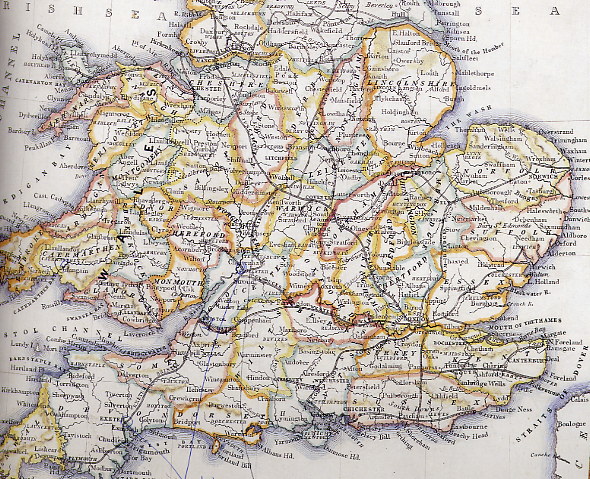
|
Let there be no doubt. This is a biography written out of love for a small body of poetry written by a woman. Written out of respect, respect for a difficult life and private vulnerability encountered, encountered and turned into a private success. It is my hope that when the ordinary reader sees the actual hand Ann was dealt, and how she played her cards, the relevance of her life to most lives, and how it led to what is valuable in her poems will be clear. And let this one "may have" and this one "must have" stand for them all. |

|
We begin by drawing two triangles. A pencil point will do for our first point of reference, a dot let's say right on the home of Ann's father, Sir William Kingsmill, in northwest Hampshire, Sydmonton Court, hard by Litchfield, Malsanger Farm, Woodcott, and Tangley--the lands and houses and, through careful cultivation and collected rents, primary basis of the wealth of the Kingsmill clan. Then we draw our first line north to the home of Ann's mother, Anne Haselwood, where she and Ann's father were married, in northwest Northamptonshire, Maidwell, just one of the somewhat smaller holdings of the Haslewoods, Draughton, Rothwell, and for a time, Kelmarsh, all within a few miles of one another. From this second point of our triangle we turn directly south, somewhat to the east, and for our second line head for London. There are many points where our pencil can come to rest. There's St James's Palace where as maid of honor to Mary d'Este, then Duchess of York, Ann met Heneage Finch, second son by the second wife of the first Earl of Winchilsea; there's Westminster Palace, where they went to live after they married; there is the second Theatre Royal in Drury Lane to which Ann went as Colonel Finch's lady; there are the houses of friends, and taverns he and she visited over the years, and then, in the same area as St. James's Palace, nearby Cleveland Row, to which they came and where Ann died many years later. And so for the triangle's base line home again to Kingsmill clan at Sydmonton Court. Our second triangle covers much of the same area. But this time we'll begin in the Weald, the central rich farm land, once filled with forests, of Kent where lay the Winchilsea estates, Wye, Ashford, and most importantly a house and park central to Ann's later life, Eastwell--her husband Heneage Finch's first and last home, in whose parish church she and he were buried side by side. Again for our first line we travel northwest heading again for Northampton. Up we go into northern Herefordshire, past Hatfield House, home of Ann Tufton Cecil, Ann's beloved Lady Salisbury of "A Noctural Reverie" fame (she who stood "the Test of every light"), further and further north until we reach the second corner of our figure, not far from Maidwell, the home of Ann's maternal cousin, Elizabeth Haslewood, Lady Hatton--Kirby Hall, Northamptonshire where during the fearful time of James II's flight and Heneage's ordeal Ann lived. From here our pencil turns southwest and our line travels to the borders of Wiltshire and Dorsetshire, the landscape of Leweston, Frome, and, especially, Longleat, the homes of faithful relatives-by- marriage and friends, the Thynnes and their circle, places which Ann and Heneage visited more than once, places which provided refuge and peace for them in their middle years. We will draw our third base line from Longleat somewhat irregularly (poetic license) eastward, in order to take in southern Hampshire past the Worsley estates--the home of Ann's niece-by-marriage and sometime friend, Lady Francis Worsley; and back into Kent, past Tunbridge Wells, where she went for her health, past Hothfield House, home of Lady Salisbury's mother, Catherine Cavendish Tufton, Lady Thanet, Ann's Arminda, and finally Godmersham, a house rented or loaned to Heneage and Ann Finch at a nadir of their lives in the mid-1690's. And so home to Eastwell. Ann Kingsmill lived the whole of her life inside these two overlapping triangles, in this landscape, amid the furniture and culture of its houses, privileged and circumscribed by the wealth, political connections, and crises of its interlocking mostly wealthy families. Her story begins with two marriages, with the birth of a second son to one couple, and four and one-half years later, a third child, a daughter, to the other. Neither child was likely to inherit a fortune. |